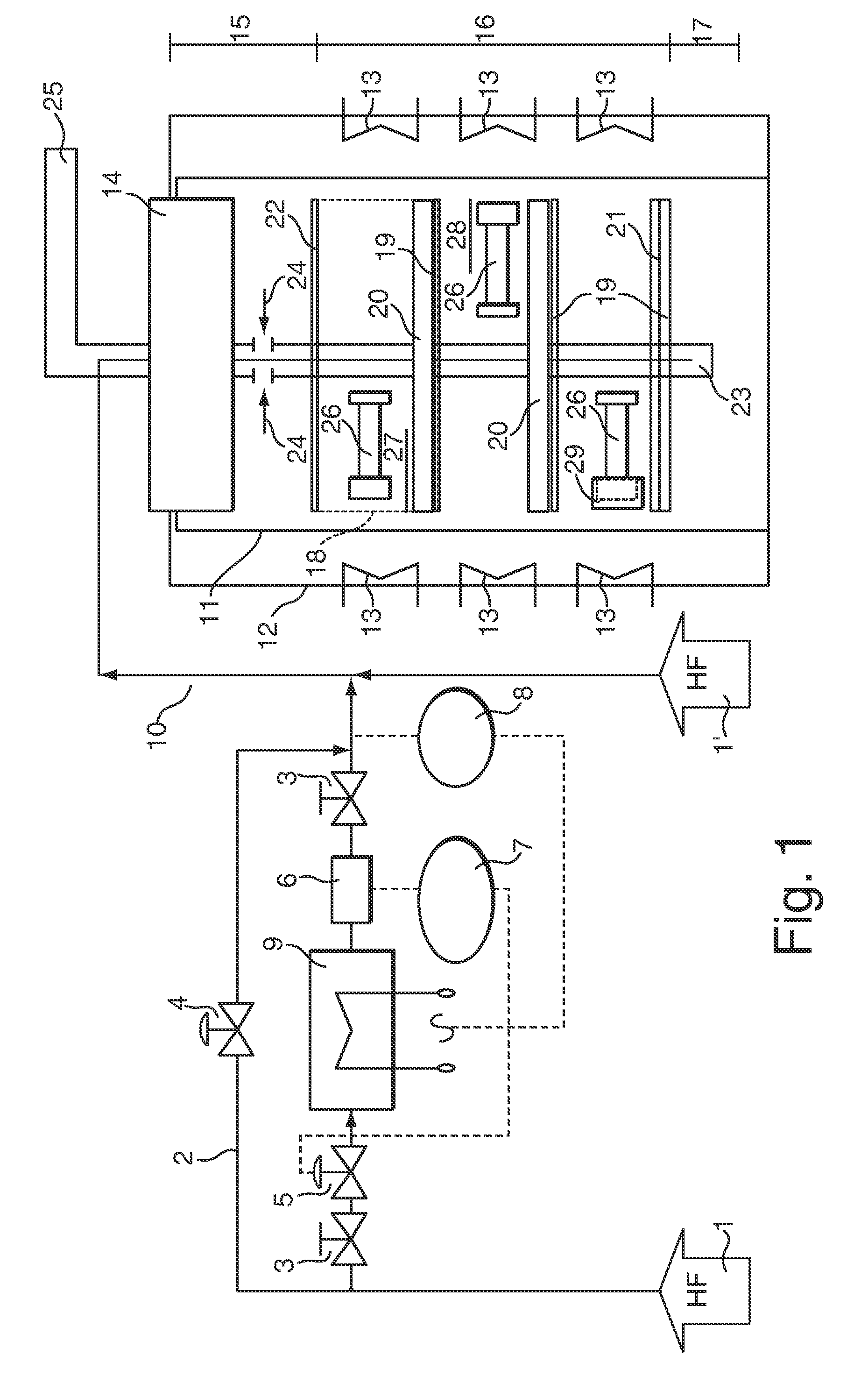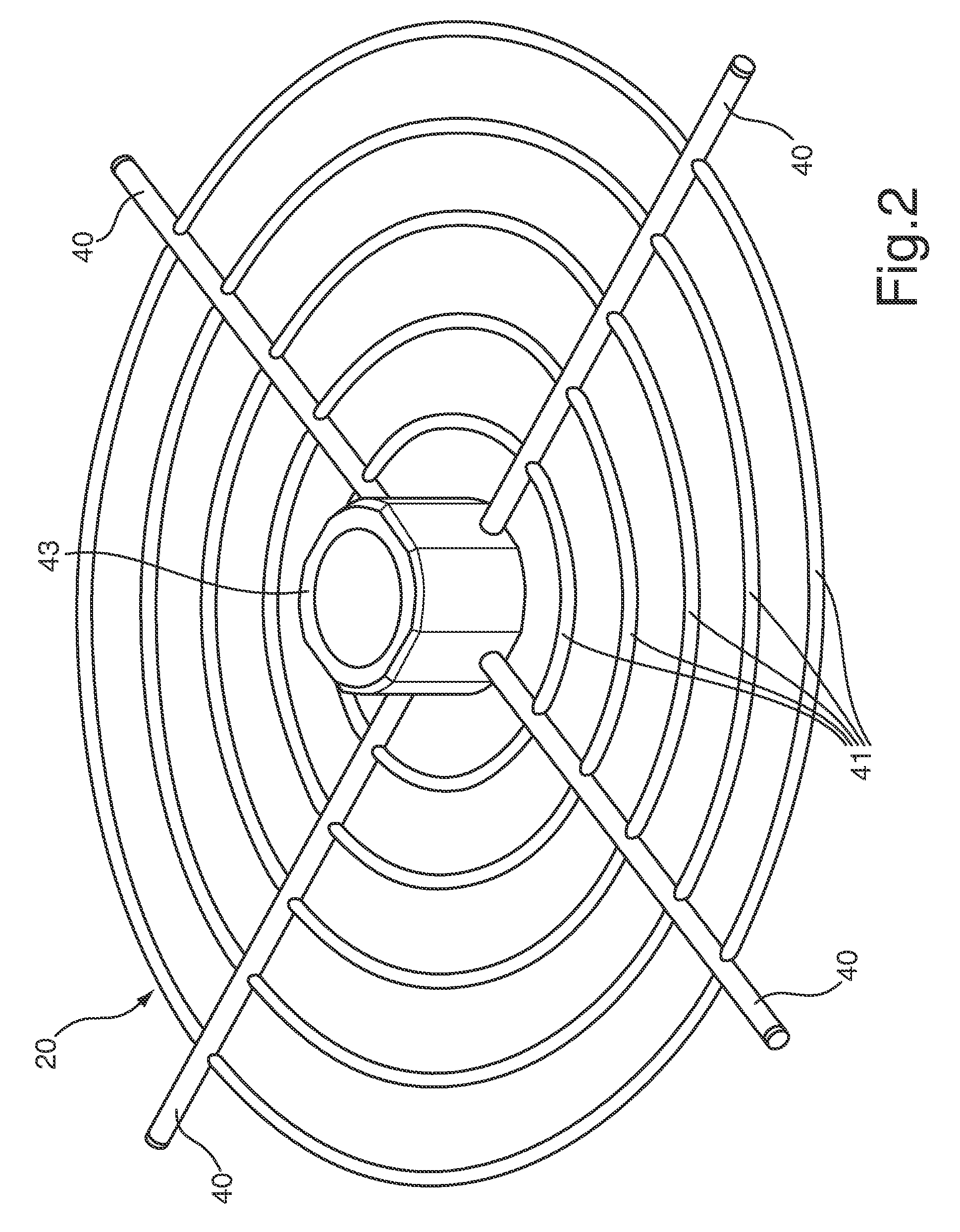Device for cleaning oxidized or corroded components in the presence of a halogenous gas mixture
a technology of oxidized or corroded components and halogen gas mixture, which is applied in the direction of cleaning process and equipment, cleaning using liquids, chemistry apparatus and processes, etc., can solve the problems of significant malfunctions in cleaning process, mechanical weakening of respective components, and breakdown of the entire cleaning process
- Summary
- Abstract
- Description
- Claims
- Application Information
AI Technical Summary
Benefits of technology
Problems solved by technology
Method used
Image
Examples
Embodiment Construction
[0042]FIG. 1 illustrates a schematic construction of a cleaning retort (right-hand half of figure), which is supplied with a cleaning gas mixture via a cleaning gas piping system (left-hand half of figure). The cleaning retort has a retort housing 11 which is designed essentially in the shape of a cylinder or barrel and which on its upper side is closed off in a gastight manner with a retort cover 14. The retort housing 11 is enclosed by a heating jacket 12 in which heating devices 13 ensure a cleaning process temperature in the interior of the cleaning retort of up to 1200° C. A central pipe 23 is provided centrally inside the cleaning retort and outwardly penetrates the retort cover 14 in a gastight manner, and into which cleaning gas is fed via a feed line 10. Moreover, a retort outlet 24 is provided inside the cleaning retort, via which used cleaning gas is carried out via a corresponding exhaust gas pipe 25 for further supply or disposal.
[0043]For the provision of cleaning gas,...
PUM
| Property | Measurement | Unit |
|---|---|---|
| temperatures | aaaaa | aaaaa |
| pressure | aaaaa | aaaaa |
| temperature | aaaaa | aaaaa |
Abstract
Description
Claims
Application Information
 Login to View More
Login to View More - R&D
- Intellectual Property
- Life Sciences
- Materials
- Tech Scout
- Unparalleled Data Quality
- Higher Quality Content
- 60% Fewer Hallucinations
Browse by: Latest US Patents, China's latest patents, Technical Efficacy Thesaurus, Application Domain, Technology Topic, Popular Technical Reports.
© 2025 PatSnap. All rights reserved.Legal|Privacy policy|Modern Slavery Act Transparency Statement|Sitemap|About US| Contact US: help@patsnap.com



